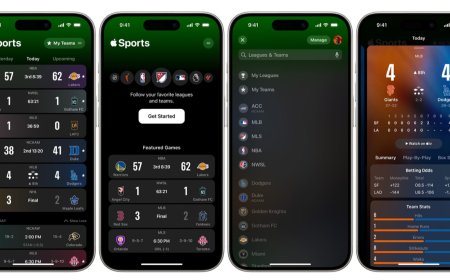Agile Meaning: Understanding the Basics of Agile Methodology
Learn the meaning and key principles of agile methodology in project management, including Scrum, Kanban, and Lean frameworks.

Agile Meaning: Understanding the Basics of Agile Methodology
Agile methodology is a modern approach to project management that has revolutionized the software development industry. It is characterized by its flexibility, collaborative nature, and ability to adapt to change. In this article, we will explore the meaning of agile methodology and how it works, as well as its benefits and drawbacks.
What is Agile Methodology?
Agile methodology is a project management approach that emphasizes flexibility, collaboration, and continuous improvement. It was developed as an alternative to traditional project management methodologies that often relied on rigid plans and processes that were difficult to change.
In agile methodology, the focus is on delivering value to the customer through iterative and incremental development. This means that projects are broken down into small chunks called sprints, with each sprint producing a usable product increment. The team then gets feedback from stakeholders and adjusts the product increment based on that feedback.
History of Agile Methodology
The origins of agile methodology can be traced back to the 1990s when a group of software developers created the Agile Manifesto. The Agile Manifesto is a set of guiding values and principles for agile development that emphasizes customer satisfaction, teamwork, and flexibility.
Since then, agile methodology has grown in popularity and has been adopted by organizations in various industries. Today, it is widely used in software development, but it has also been applied to other areas such as marketing, HR, and even education.
Agile Methodology vs. Traditional Project Management
Traditional project management methodologies, such as the Waterfall model, follow a linear approach to project management. Projects are divided into sequential phases, with each phase building on the previous one.
In contrast, agile methodology takes an iterative and incremental approach to project management. Instead of dividing the project into sequential phases, it is broken down into small chunks called sprints. Each sprint produces a usable product increment, and the team gets feedback from stakeholders and adjusts the product increment based on that feedback.
Principles of Agile Methodology
Agile methodology is guided by a set of 12 principles that emphasize customer satisfaction, teamwork, and flexibility. These principles include:
- Customer satisfaction through early and continuous delivery of valuable software
- Welcome changing requirements, even in late development
- Deliver working software frequently, with a preference for shorter timescales
- Collaborate with customers and stakeholders throughout the project
- Build projects around motivated individuals and give them the support and environment they need to get the job done
- Use face-to-face communication whenever possible
- Working software is the primary measure of progress
- Agile processes promote sustainable development
- Continuous attention to technical excellence and good design enhances agility
- Simplicity - the art of maximizing the amount of work not done - is essential
- Self-organizing teams produce the best architectures, requirements, and designs
- Regularly reflect on the team's effectiveness and adjust behavior accordingly
Agile Methodology Frameworks
Agile methodology can be implemented using various frameworks, each with its own set of practices and techniques. Some of the most popular agile methodology frameworks include:
Scrum
Scrum is one of the most widely used agile methodology frameworks. It is a framework for managing and completing complex projects. Scrum is characterized by its iterative and incremental approach to project management. It divides the project into small chunks called sprints, with each sprint producing a usable product increment.
Scrum teams consist of a product owner, a scrum master, and a development team. The product owner is responsible for defining and prioritizing the project backlog, which is a list of features or tasks that need to be completed. The scrum master is responsible for facilitating the scrum process and ensuring that the team follows the agile principles and practices. The development team is responsible for delivering the product increment at the end of each sprint.
Kanban
Kanban is another popular agile methodology framework. It is a visual system for managing and improving workflow. Kanban boards are used to visualize the work that needs to be done, the work that is in progress, and the work that has been completed.
Kanban is characterized by its focus on continuous delivery and flow. It emphasizes the importance of limiting work in progress and minimizing work items that are blocked or waiting. Kanban teams typically have a kanban board that shows the status of each work item, as well as the team's capacity and throughput.
Lean
Lean is an agile methodology framework that is based on the principles of lean manufacturing. It focuses on minimizing waste and maximizing value. Lean teams are typically cross-functional and self-organizing. They work together to identify and eliminate waste, improve processes, and deliver value to the customer.
Lean is characterized by its emphasis on continuous improvement and respect for people. It encourages teams to experiment, learn from failures, and continuously improve their processes and products.
Agile Methodology Practices
Agile methodology is based on a set of practices and techniques that are designed to help teams deliver value to the customer. Some of the most common agile methodology practices include:
User Stories
User stories are short, simple descriptions of a feature or requirement from the perspective of the user. They are used to capture the user's needs and requirements and to ensure that the team is delivering value to the customer.
User stories typically follow a template that includes a description of the user, the user's need or goal, and the benefit to the user.
Sprint Planning
Sprint planning is a meeting that takes place at the beginning of each sprint. The purpose of sprint planning is to define the scope of the sprint and to create a plan for delivering the product increment at the end of the sprint.
During sprint planning, the team reviews the project backlog, selects the items that will be included in the sprint, and breaks them down into tasks. The team also estimates the effort required to complete each task and creates a plan for how the work will be done.
Daily Stand-up Meetings
Daily stand-up meetings, also known as daily scrums, are short, daily meetings that are used to keep the team aligned and focused. The meetings typically last 15 minutes or less and are held standing up to encourage brevity.
During the daily stand-up meeting, each team member answers three questions: What did I do yesterday? What am I going to do today? Are there any impediments blocking my progress?
Sprint Review
The sprint review is a meeting that takes place at the end of each sprint. The purpose of the sprint review is to demonstrate the product increment that was completed during the sprint and to get feedback from stakeholders.
During the sprint review, the team presents the completed work to the stakeholders and solicits feedback. The stakeholders can be anyone who has a stake in the project, including customers, managers, and other team members.
Retrospective
The retrospective is a meeting that takes place at the end of each sprint. The purpose of the retrospective is to reflect on the sprint and to identify opportunities for improvement.
During the retrospective, the team reviews the sprint and identifies what went well, what didn't go well, and what can be improved. The team then creates a plan for how they will improve in the next sprint.
Continuous Integration
Continuous integration is a practice that involves frequently integrating code changes into a shared repository. The goal of continuous integration is to detect and resolve integration issues early in the development process.
Continuous integration involves automating the build and testing process so that code changes can be quickly and reliably integrated into the main codebase.
Test-Driven Development
Test-driven development is a practice that involves writing automated tests before writing code. The goal of test-driven development is to ensure that the code is tested thoroughly and that it meets the requirements.
Test-driven development involves writing a test case that defines the desired behavior, writing code to implement that behavior, and then running the test to ensure that it passes.
Conclusion
Agile methodology is a flexible and iterative approach to project management that emphasizes customer satisfaction, teamwork, and continuous improvement. Agile methodology can be implemented using various frameworks and practices, each with its own set of benefits and challenges. By using agile methodology, teams can deliver high-quality products that meet the needs of the customer, while also improving their processes and teamwork.
What's Your Reaction?






















































